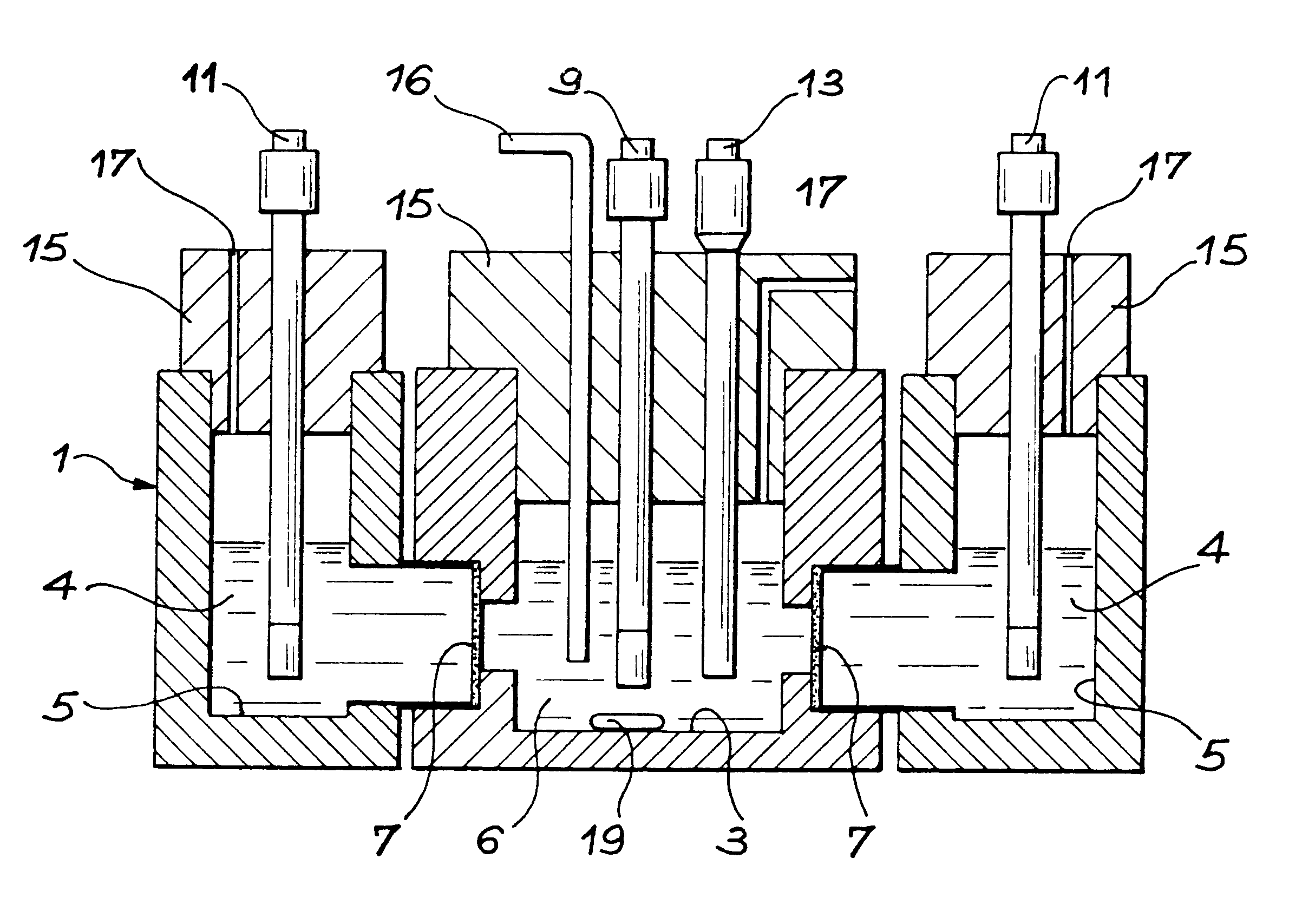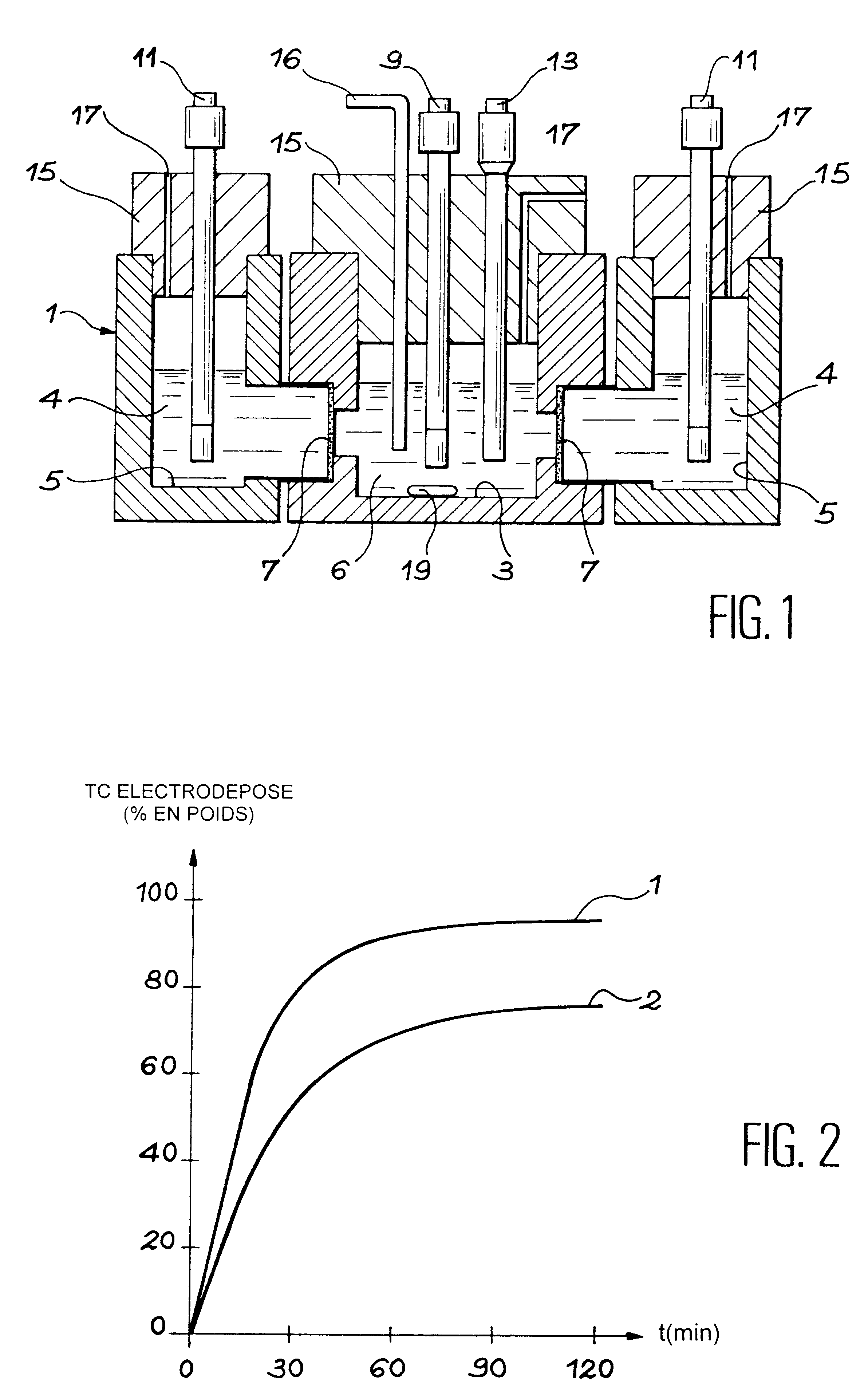Method for separating technetium from a nitric solution
- Summary
- Abstract
- Description
- Claims
- Application Information
AI Technical Summary
Benefits of technology
Problems solved by technology
Method used
Image
Examples
examples 2 to 11
In these examples we studied the effect of the variation in Tc(VII) technetium concentration of solution b) at the start of electrolysis on the yield of technetium electrodeposited on the cathode; the effect of the variation in pH of solution b) at the start of electrolysis on the yield of technetium electrodeposited on the cathode; and the effect of the variation in cathode potential in relation to the standard hydrogen electrode, E.sub.cat / SHE, on the yield of technetium electrodeposited on the cathode.
These examples are conducted in the same manner as in example 1, varying at least one of the above-mentioned parameters: the Tc(VII) concentration from 0.25 to 2.5 mg / 10 ml of solution b), the pH value from 5.5 to 7.5 and the cathode potential E.sub.cat / SHE from -0.96 to -1.36 V / SHE.
The results of examples 2 to 11 are grouped under table 2 below.
These examples show that yields of technetium electrodeposition higher than 95% can be obtained after electrolysis of denitrified solutio...
example 12
This example illustrates the effect of the variation in the ratio between cathode surface area S and volume V of solution b)in the cathode compartment on the chemical yield of technetium electrodeposited on the cathode. Electrolysis solution b) contains 2.17 mg of technetium (VII) for a volume of 10 ml, it is adjusted to a pH of 7.37 and the potential applied to the cathode is -0.96 V / SHE. The S / V ratio is 0.25 cm.sup.-1.
The results of this example 12 are given in table 2 below, together with the results of examples 1 to 11 previously described.
example 12 well
illustrates the importance of the S / V ratio on the yield of technetium electrodeposited on the cathode. When S / V decreases, the electrodeposition yield also decreases.
PUM
| Property | Measurement | Unit |
|---|---|---|
| Length | aaaaa | aaaaa |
| Electric potential / voltage | aaaaa | aaaaa |
| Electric potential / voltage | aaaaa | aaaaa |
Abstract
Description
Claims
Application Information
 Login to View More
Login to View More - R&D
- Intellectual Property
- Life Sciences
- Materials
- Tech Scout
- Unparalleled Data Quality
- Higher Quality Content
- 60% Fewer Hallucinations
Browse by: Latest US Patents, China's latest patents, Technical Efficacy Thesaurus, Application Domain, Technology Topic, Popular Technical Reports.
© 2025 PatSnap. All rights reserved.Legal|Privacy policy|Modern Slavery Act Transparency Statement|Sitemap|About US| Contact US: help@patsnap.com


